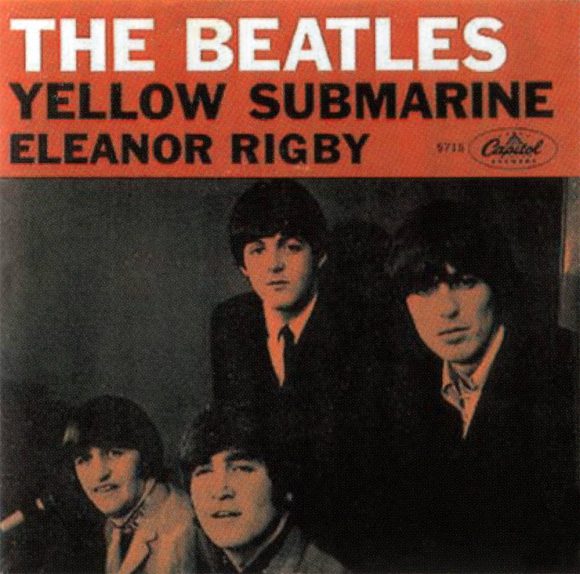Released as a double a-side with ‘Eleanor Rigby’, ‘Yellow Submarine’ has become a divisive song among Beatles fans. To many it is a charming singalong for all ages; for others, it’s one of the band’s weakest moments, and an unnecessary bout of whimsy…
 Continue reading on Beatles Bible →
Continue reading on Beatles Bible →Yellow Submarine was a track on the Beatles revolutionary and mind-blowing Revolver (isn’t the album title a great example of their flair for double – and triple – meanings). It was also one A side of a double-A sided single (with Eleanor Rigby), and a prominent feature of the eponymous film and LP.
The beatlesbible.com article is interesting as it highlights – through an outtake on the Revolver deluxe release – what seems like Lennon’s contribution to the melody in the verse along with downbeat more Strawberry Fields style initial placeholder lyrics:
“In the place where I was born
No one cared, no one cared
And the name when I was born
No one cared, no one cared
And the town where I was born
No one cared, no one cared…”
Overall the song seems to be a Lennon-McCartney collaboration with McCartney contributing the title, the overall idea, (most likely) the upbeat, family-friendly tone of the final work and (in the Barry Miles book) claiming almost all of the credit. I already (in the entry on All Together Now) commented positively on the Beatles ability to write for children and families.
Addressing Yellow Submarine specifically McCartney said:
“I quite like children’s things; I like children’s minds and imagination. So it didn’t seem uncool to me to have a pretty surreal idea that was also a children’s idea…”
“… I thought also, with Ringo being so good with children – a knockabout uncle type – it might not be a bad idea for him to have a children’s song, rather than a very serious song.”
I think these songs and this attitude, that children’s minds and imagination were not uncool, were probably pretty important both in fashioning the Beatles cross-generational appeal and fostering their own creativity.
Creativity of any kind is a playful act of imagination. It’s an innate capacity that we’re born with but that we suppress to seem grown-up. We must overcome adult concerns with cool and self-censorship if creativity is to reach its limits. Although it’s typically McCartney that gets criticised for this playful approach, you can see it clearly in Lennon too – in his trademark lyrical wordplay and in the Lear/Carroll/Goon flavoured prose/poetry of In His Own Write.
Although they were naturally given to playful creativity, I think the Beatles struggled with it a bit with this though as they also really did want to be cool. For example, I think they rejected “How Do You Do It?” as a bit soft, and Lennon was – it sometimes seems – constantly taking McCartney to task for his “granny music”.
Ironically, like all “uncool” creatives they are ultimately the coolest precisely because they were willing to venture into this territory, albeit reluctantly sometimes. Being true to yourself is the epitome of cool, partly because it is so hard!
Yellow Submarine is in part a victim of its own success as a children’s song. To everyone who – like me – grew up with it as a nursery rhyme, it probably seems as innocuous, familiar and reassuring as Twinkle Twinkle Little Star or Little Miss Muffet. But the idea of a commune living aboard a yellow submarine is really pretty psychedelic! Very 1966.
Overall Yellow Submarine is an important track. As well as pulling together psychedelia and Lennon-McCartney’s playful creativity, it also brings out the best of George Martin and Parlophone’s experience with comedy sound effects, and it balances the tone of the album (even if I do sometimes skip it).

